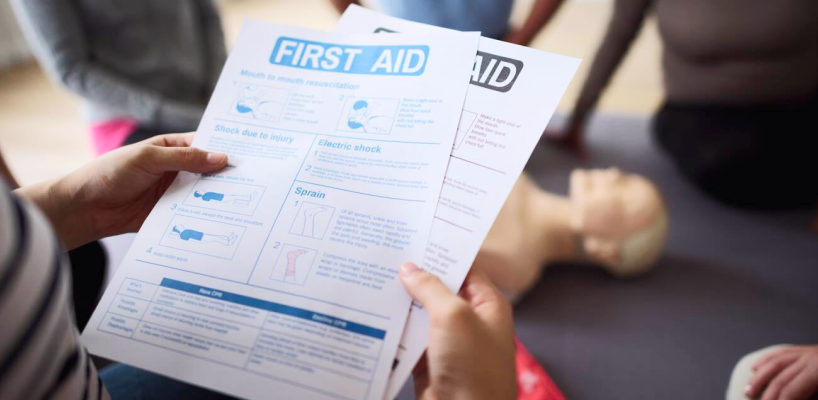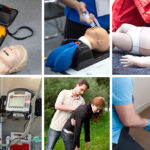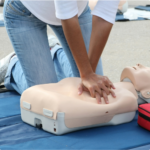
- Last Updated On: May 29, 2024
What Does BLS Stand For?
BLS meaning is basic life support that teaches individuals ways to manage critical medical emergencies. Victims of cardiac arrest can lose their lives if immediate and appropriate attention is not given.
If you have encountered a life-threatening emergency, you are aware of the fear of such incidents. BLS meaning refers to the level of medical care used by healthcare professionals for victims with respiratory distress and cardiopulmonary emergencies. It also involves assessment, maintenance of the airway, and chest compressions.
Importance of BLS
BLS certification means basic life support. Here is the importance of the BLS training course:
Boosts confidence to save lives: During medical emergencies, bystanders do not know how to respond. This is due to less knowledge and information. It also creates fear for bystanders. As a result, most victims often lose their lives. It is normal to experience such feelings due to a lack of experience and skills.
It provides necessary skills and hands-on experience: This provides sufficient knowledge and life-saving skills. It provides learners with key skills for recognizing victims.
Cardiac arrest does not leave the rescuer much to save the victim’s life. The earlier the victims receive medical aid, the higher their chances of survival. The course teaches essentials about cardiac arrest and providing appropriate help.
It offers skills in the performance of CPR: BLS training offers the learners skills in performing CPR. This is a critical life-saving technique. You can take a BLS practice test to evaluate your knowledge of basic life support.
Provides AED skills: BLS teaches AED usage, which is essential in the revival of the heart of a cardiac arrest victim. By delivering an electric shock to the heart muscles, it restores the electrical connections. In cardiac arrest the heart cannot pump blood to the rest of the body. This leads to arrhythmia. The AED can reverse an irregular heartbeat.
Promotes a sense of safety: The knowledge of BLS promotes a sense of safety. Whether at a place of work or at home, health emergencies are sudden and can occur anytime. BLS-trained individuals can serve as rescuers and help individuals during emergencies.
Read More: What is a BLS course?
Components of BLS (CPR, Rescue Breaths, and AED Use)
The components of basic life support include the following:
- CPR: Cardiopulmonary resuscitation involves chest compressions and rescue breaths that help maintain blood circulation and oxygenation.
- Rescue breaths: During a sudden cardiac arrest, a patient needs immediate care, and rescue breaths are one of them. This is given to the patient during CPR to provide oxygen to the lungs.
- AED use: AEDs deliver electrical shock to the heart during a sudden cardiac arrest. This helps restore its normal rhythm. It is the ultimate companion to CPR and BLS. It is available in several public places for use during emergencies.
These components work seamlessly to offer care to patients and improve outcomes.
Who benefits from BLS training?
BLS training is critical for healthcare providers and individuals preparing to respond to medical emergencies. Here are the individuals who benefit from BLS training:
- Nurses
- Physicians
- Teachers
- Social care workers
- Daycare providers
- Parents
BLS Certification Courses
BLS certification courses cover the following topics:
- Performing high-quality CPR for adults, infants, and children.
- The chain of survival relevant to BLS components
- Easy use of an automated defibrillator (AED)
- Effective ventilation using a barrier device
- Team dynamics
- Relief from choking
Read More: What to Expect in a BLS Course Format?
Maintaining BLS Certification
With online BLS courses, maintaining your certifications is fast, simple, and easy. You can go back and read the materials anytime and anywhere. Moreover, you can download the certifications easily. Simply download them, print them, and use them whenever required.
Conclusion
Thus now that you know BLS meaning, enroll with a reputed course provider and seek certification. With a BLS-trained individual around, when emergencies occur, there is less panicking. While panicking is a sign of hopelessness for the victim and those around them, they wouldn’t know how to do it.
Due to the high number of cardiac arrest cases, not everyone received help from bystanders. BLS-trained individuals increase the chances of survival for patients experiencing a heart attack. Before you initiate CPR, you must ensure safety and competence.
This will allow you to provide a comprehensive BLS emergency response and keep patients alive until safety professionals arrive.






